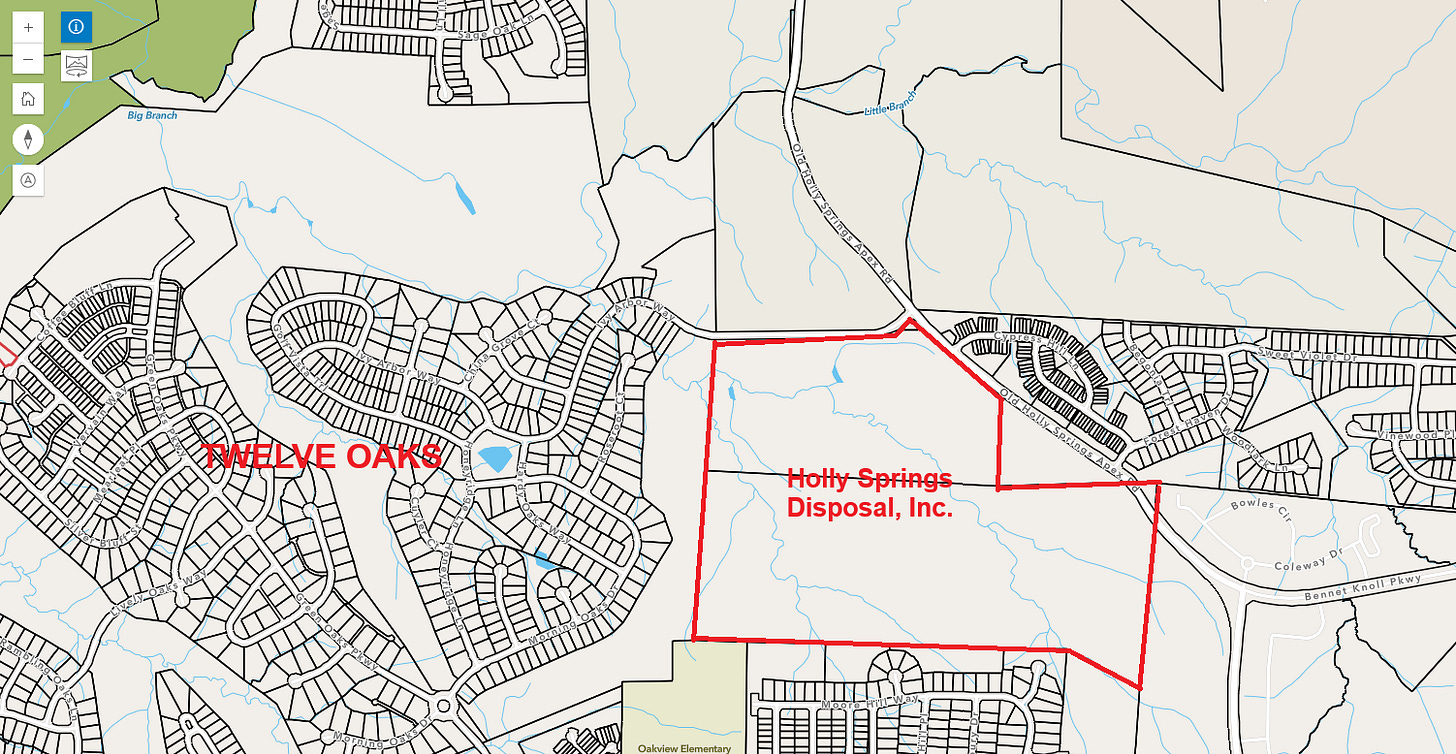4300 Old Holly Springs-Apex Road: A Landfill in the Spotlight
Landfill stands as a symbol of the town’s transition from rural crossroads to booming suburb and from neglected community to battleground for environmental equity.
Holly Springs, NC, Mar. 25, 2025 — Nestled in southern Wake County, just outside the growing town of Holly Springs, the property at 4300 Old Holly Springs-Apex Road has played a central role in the region’s environmental and social history. This site became known as the Holly Springs Disposal, Inc. Construction and Demolition (C&D) Landfill, initially operating under Permit No. 92-J and later reissued as Permit No. 92-14 by the North Carolina Division of Solid Waste Management in 1993.
From Local Debris to Regional Waste Hub
The landfill, managed by Browning-Ferris Industries (BFI), was originally permitted as a Land-Clearing and Inert Debris (LCID) site. But as development pressures mounted and construction surged across Wake County in the early 1990s, the landfill evolved to accept a broader array of materials—namely, construction and demolition waste, yard waste, and, potentially, scrap tires.
This expansion of services did not go unnoticed. The facility became emblematic of a more significant regional conflict about waste, race, and environmental justice.
Environmental Justice and Local Opposition
By the mid-1990s, residents of Holly Springs—especially those in predominantly Black neighborhoods—were becoming increasingly vocal in their opposition to the growing concentration of solid waste facilities in and around their community. A 2006 UNC-Chapel Hill study documented that nine out of ten permitted solid waste facilities in the area were located in Black communities, including the BFI site at 4300 Old Holly Springs-Apex Road.
Despite community opposition, town leaders extended the BFI landfill’s operation multiple times. In 2001, the Holly Springs Board of Commissioners voted to keep the landfill open an extra four months—until April 2003—citing the potential to generate up to $800,000 in tipping fees, a significant amount for the small town. Still, many residents saw this as a betrayal of the town’s ongoing legal battle against a proposed county landfill, suggesting it sent “a mixed signal” to both the county and the courts.
Landfill Politics and Policy
Though town leaders differentiated between the BFI site (which handled C&D waste) and the proposed Wake County landfill (intended for municipal solid waste), the optics were poor. “How can we go to the county again and again with the same refrain if we cannot shut down the one landfill the town has control over?” asked local resident Anne Allen during a 2001 town meeting.
Nonetheless, the landfill at 4300 Old Holly Springs-Apex Road remained operational well into the 2000s, even as new residential developments and a demographic shift swept through the region. The town grew rapidly, with its population ballooning by more than 900% between 1990 and 2000, changing from a majority-Black community to one that was majority-White.
Regulatory Background
From a regulatory standpoint, the landfill adhered to state solid waste rules but had to undergo multiple permit changes as its function expanded. The transition from LCID to a full C&D landfill required a re-permitting process, including conditions for groundwater monitoring, recordkeeping, and site-specific buffers of at least 100 feet between waste boundaries and property lines.
Evaluations by the North Carolina Solid Waste Section in the early 1990s showed the facility was being monitored for compliance, with some minor operational requirements under review.
Legacy and Lessons
The landfill at 4300 Old Holly Springs-Apex Road remains a key chapter in Holly Springs's environmental history. It stands as a symbol of the town’s transition from rural crossroads to booming suburb and from neglected community to battleground for environmental equity. While its operations may have generated much-needed municipal revenue, the social and political costs sparked a broader reckoning about land use, racial justice, and the responsibilities of local government.
Today, the story of this landfill continues to inform public discourse about how small towns manage growth, balance environmental responsibilities, and ensure fair treatment for all residents.

